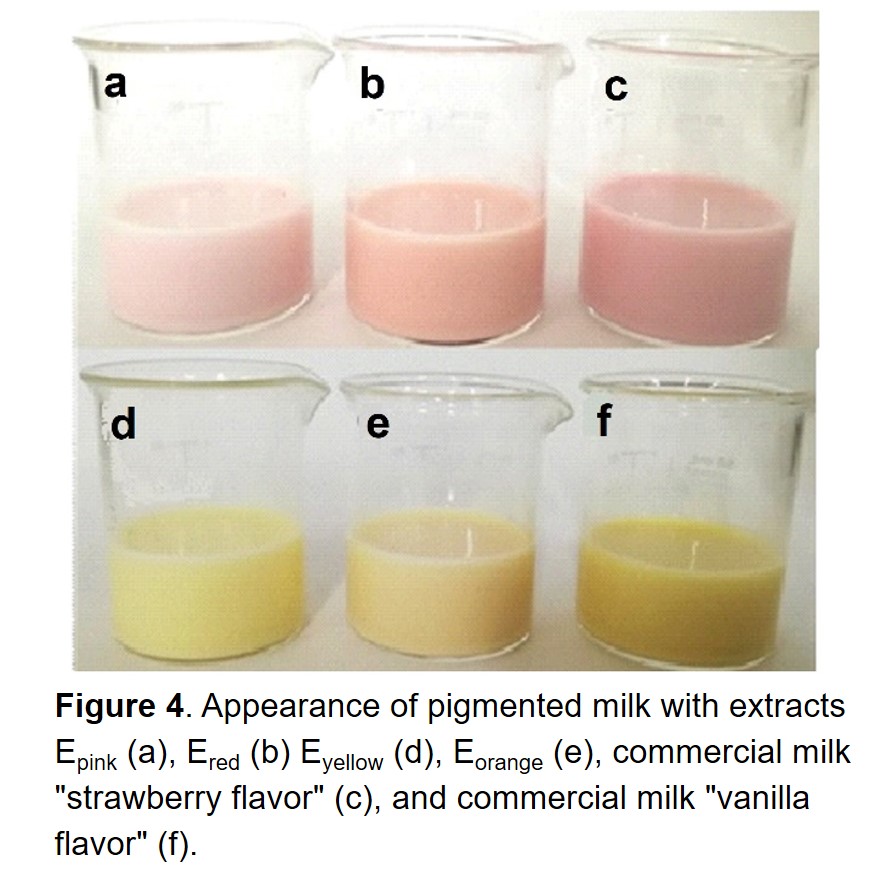Pigmenting potential of betacyanins and betaxanthins separated from fruits of Stenocereus pruinosus with aqueous biphasic systems
DOI:
https://doi.org/10.56890/jpacd.v25i.522Keywords:
Stenocereus spp., Aqueous two-phase extraction, Betalains, PigmentationAbstract
The fruit of Stenocereus pruinosus is a source of betalains that can be used to provide tonalities ranging from red-violet to yellow, but the partitioning into betacyanins and betaxanthins must be addressed, in addition to the reduction of sugars. The objective was to evaluate the use of extracts of betalains from Stenocereus pruinosus fruits with different tones and low sugar content in the pigmentation of food matrices. Aqueous biphasic systems (ABS) based on 1-propanol and sodium citrate were applied in multiple stages to obtain fractions rich in betaxanthins and betacyanins. Subsequently, an ABS based on polyethylene glycol 4000 and sodium citrate was used to reduce the sugar content. The extracts were used to pigment milk and to evaluate the color stability during a storage of 39 d at 4 °C. Four fractions, Eyellow, Eorange, Epink, and Ered, were obtained with betacyanins concentration of 9.23, 22.37, 76.54, and 61.0 mg L-1 and betaxanthins concentration of 49.3, 77.5, 35.2, and 53.32 mg L-1, respectively. The hue angle of the pigmented milk with Eyellow, Eorange, Epink, and Ered was 81.9, 60.6, 9.6, and 13.0°, respectively, at the beginning. The color remained without apparent change during 24 d, which allowed extracts of betacyanins and betaxanthins to be qualified as adequate to provide reddish and yellow hue in milk beverages. Although the multistage operation was required, four fractions with different tones were obtained from only one sample, which constitutes an innovative feature. In conclusion, it is feasible the use of betalains obtained with ABS from fruits of S. pruinosus as pigmenting agents of foods.
Publication Facts
Reviewer profiles N/A
Author statements
Indexed in
- Academic society
- Journal of the Professional Association for Cactus Development
- Publisher
- Professional Association for Cactus Development




